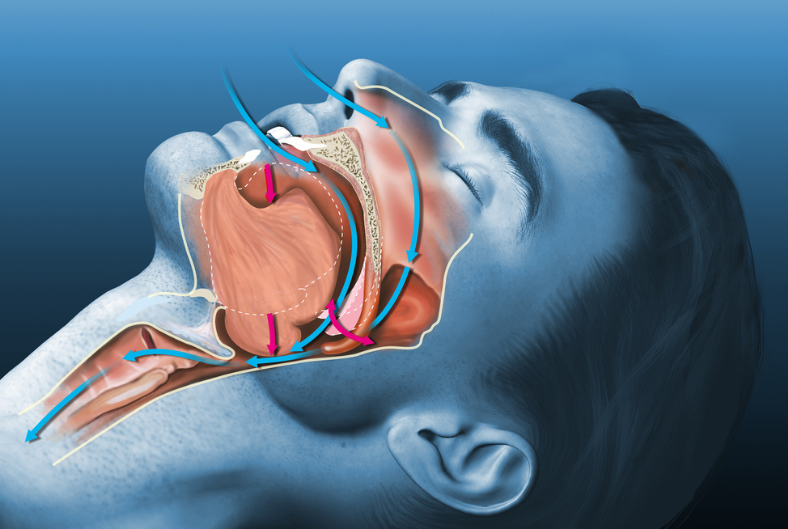The most prevalent respiratory condition associated with sleep is obstructive sleep apnea. While you’re sleeping, it causes your breathing to stop and start periodically.
Obstructive sleep apnea is the most prevalent of the many forms of sleep apnea. This kind of sleep apnea happens when the muscles in your throat periodically relax and close off your airway.
Obstructive Sleep Apnea: What Is It?
When your upper airway is partially or completely blocked while you are sleeping, you have obstructive sleep apnea. To widen your airway and draw air into your lungs, you will have to exert more effort with your diaphragm and chest muscles. You could even short-stop breathing if your breathing becomes so shallow. A loud gasp, snort, or bodily jolt often signals the beginning of your next breath.
You could have trouble sleeping, but you won’t likely be aware of it.
Additionally, the illness may lessen the amount of oxygen reaching your organs and result in irregular heartbeats.
Symptoms of Obstructive Sleep Apnea
Here are common obstructive sleep apnea warning signs:
- Daytime tiredness or drowsiness
- The morning after having a sore throat or dry mouth
- Early morning headaches
- Inability to concentrate, forgetfulness, sadness, or irritability
- Sweats at night
- Having trouble falling asleep
- Sexual issues, such as a decreased sex desire
- Snoring
- Having a quick awakening and feeling as though you are choking or gasping
- Difficulty rising in the mornings
- Frequently waking up in the middle of the night to go the restroom
- Elevated blood pressure
- The disease of the gastroesophageal reflux (GERD)
Your bed partner will undoubtedly become aware of your sleep apnea if you share it.
Obstructive sleep apnea: What causes it?
Some of the illnesses connected to OSA include:
- The obesity-related respiratory issue called hypoventilation syndrome
- Sleep breathing can be impacted by endocrine diseases such as hypothyroidism, acromegaly, and polycystic ovary syndrome.
- Asthma, chronic obstructive pulmonary disease (COPD), and pulmonary fibrosis are examples of chronic lung diseases.
- Strokes and other neuromuscular diseases can obstruct brain impulses to your airway and chest muscles
- Heart or renal disease may result in fluid accumulation in your neck and obstruction of the upper airway during pregnancy.
Risk elements
If you have physical characteristics that constrict your upper airway, your risk for OSA rises. OSA risk factors include:
- Obesity
- Large tonsils
- Smoking
- Family OSA History
- Males with collars that are at least 17 inches wide
- Ladies with collars that are at least 16 inches wide
- A big tongue that might obstruct your airway
- When your lower jaw is shorter than your upper jaw, you have retrognathia.
- A more readily collapsible airway or palate due to its narrowness.
Obstructive sleep apnea is diagnosed in what ways?
A thorough history and physical examination are the first steps in the diagnosis of sleep apnea. Important indicators include snoring and a history of daytime drowsiness.
To find any physical issues connected to sleep apnea, your doctor will check your head and neck.
Your doctor might ask you to complete a questionnaire regarding your sleep patterns, quality of sleep, and daytime sleepiness.
The OSA assessment may occasionally be carried out at home without a technician present. But only certain people can be diagnosed with OSA with home sleep apnea testing. If additional sleep problems are suspected, it does not serve as a replacement for other diagnostic procedures.
Treatment for Obstructive Sleep Apnea
- If necessary, weight loss. It is one possible obstructive sleep apnea therapy option. Even a 10% weight loss might have a significant impact.
- Avoiding both alcohol and sleeping medications. These increase the likelihood that your airway may shut as you sleep and prevent you from breathing normally for extended periods.
- Snoozing with your side up. If you just experience moderate sleep apnea when you turn over on your back, this may be helpful.
- Nasal sprays. Using these can help you breathe better while sleeping if you have sinus problems or nasal congestion.
Final Thoughts
The first thing you should do if you experience daytime drowsiness or insomnia is talking to your doctor.
The symptoms of OSA can be managed with a variety of treatment options. Your doctor will schedule therapy sessions comprising lifestyle changes and other mental health treatments.
Suave Concierge’s professionals can help you with that. So, get started by contacting us right away!

